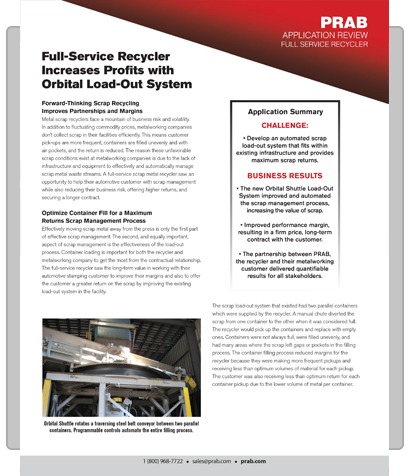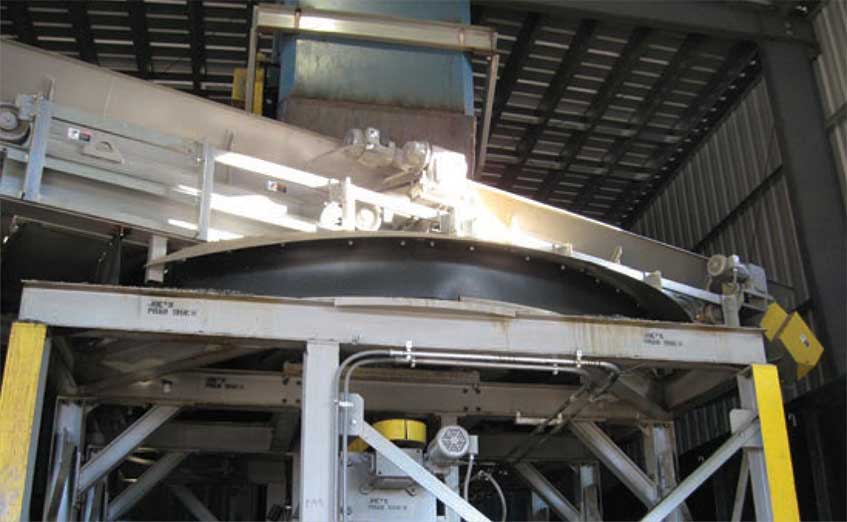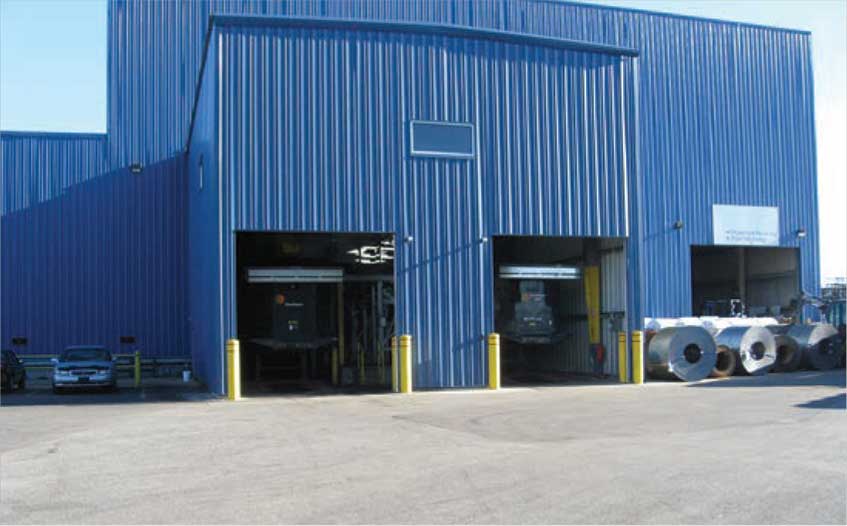
Metal scrap recyclers face a mountain of business risk and volatility. In addition to fluctuating commodity prices, metalworking companies don’t collect scrap in their facilities efficiently. This means customer pick-ups are more frequent, containers are filled unevenly and with air pockets, and the return is reduced.
Metal scrap recyclers face a mountain of business risk and volatility. In addition to fluctuating commodity prices, metalworking companies don’t collect scrap in their facilities efficiently. This means customer pick-ups are more frequent, containers are filled unevenly and with air pockets, and the return is reduced. The reason these unfavorable scrap conditions exist at metalworking companies is due to the lack of infrastructure and equipment to effectively and automatically manage scrap metal waste streams. A full-service scrap metal recycler saw an opportunity to help their automotive customer with scrap management while also reducing their business risk, offering higher returns, and securing a longer contract.
Effectively moving scrap metal away from the press is only the first part of effective scrap management. The second, and equally important, aspect of scrap management is the effectiveness of the load-out process. Container loading is important for both the recycler and metalworking company to get the most from the contractual relationship. The full-service recycler saw the long-term value in working with their automotive stamping customer to improve their margins and also to offer the customer a greater return on the scrap by improving the existing load-out system in the facility.

Orbital Shuttle rotates a traversing steel belt conveyor between two parallel containers. Programmable controls automate the entire filling process.
The scrap load-out system that existed had two parallel containers which were supplied by the recycler. A manual shoot diverted the scrap from one container to the other when it was considered full. The recycler would pick up the containers and replace with empty ones. Containers were not always full, were filled unevenly, and had many areas where the scrap left gaps or pockets in the filling process. The container filling process reduced margins for the recycler because they were making more frequent pickups and receiving less than optimum volumes of material for each pickup. The customer was also receiving less than optimum return for each container pickup due to the lower volume of metal per container.
The full-service recycler contacted PRAB to assist with the current scrap load-out system at their customer’s location. PRAB came to the facility to assess and evaluate the current operating conditions and make recommendations for an automated orbital shuttle load-out system. The load-out system offered by PRAB was tailored to fit in the existing covered load-out area of the facility. The shuttle system consisted of a 6” pitch closed-frame reversing/rotating shuttle steel belt conveyor complete with the support structure, scaled container weight, level sensors, and delivery extension arm. All design, engineering, equipment, controls, and installation would be provided to the recycler for one single price and with single-source project management.

Newly completed load-out system maximized container fill and returns.
The new orbital shuttle system moves the discharging conveyor along the length of the container. Laser sensors monitor the height and location of the filling process and communicate to a central controls system when the shuttle needs to be moved. To make sure even the corners of the container are filled, an extension arm was designed to reach into hard-to-fill areas and deliver material evenly. High-level sensors fill the entire container to optimum height, and scales beneath the container maintain regulation carrying weight for the entire load. When the container is filled to set levels, the orbital shuttle diverts material to the parallel container and the filling process begins again.
This new Load-Out System provided by the recycler in partnership with PRAB gives the stamping company an improved and automated scrap management process. The new Oribital Shuttle Load-Out System changed the scrap containers from 20’ roll-off containers with a 25,000 lb capacity using a 8’ x 18’ swivel shoot to a 40,000 lb capacity 40’ x 8’ x 8’ trailer. The new system provides the recycler with an improved performance margin, which resulted in a firm price, long-term contract with the customer. The partnership between PRAB and the recycler and the customer was the important aspect of this system’s success. Each entity brought experience and expertise to the project that delivered quantifiable partner results.